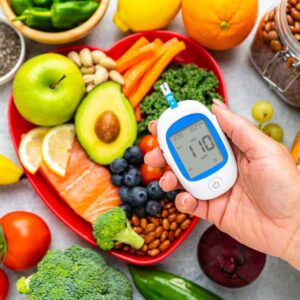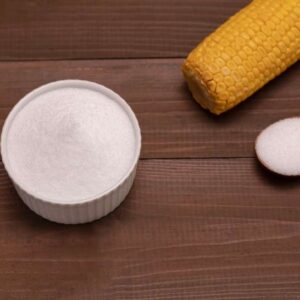
Study Reveals We’re Breathing in Dangerous Chemicals
Think about the last time you stepped outside or even sat in your home with the windows open.
Well, what if I told you that you’re likely breathing in toxic chemicals that could harm your health, no matter where you are?
A recent study out of California warns that airborne toxins, called plasticizers, are everywhere.
These chemicals, used to make plastics flexible, are found in everyday household items like lunch boxes, shower curtains, and garden hoses.
The concerning part? New research shows that their levels in the air are sky-high. Whether you’re in California or land somewhere across the country, the pollution is likely affecting you—without you even knowing it.
Plasticizers were initially made from chemicals known as phthalates. However, many have been phased out due to concerns about their health impacts.
These chemicals are linked to a wide range of health issues, including reproductive problems, neurodevelopmental disorders, and even childhood asthma.
But instead of eliminating plasticizers entirely, manufacturers replaced them with newer, less-studied chemicals called non-ortho-phthalates. And that’s where some new research comes in.
A team of scientists set out to track the number of plasticizers floating around in our air. They equipped students in Southern California with special silicon wristbands designed to collect airborne chemicals.
After five days, the wristbands were chopped up and analyzed. The results were alarming: up to 1 MILLION nanograms of plasticizers were found on each wristband!
It wasn’t just the sheer number of chemicals that was concerning—it was the fact that two of the most common plasticizers detected are known to be harmful.
They’re listed under California’s Proposition 65 as being linked to cancer and reproductive harm.
Now, the health risks associated with plasticizer exposure are still being researched, but the evidence we do have is worrying.
While newer plasticizers have yet to be studied as extensively, early research suggests they could be just as harmful, if not more so.
Even more troubling, exposure to these chemicals is inescapable because they’re in the air we breathe. The study found that even students commuting in relatively clean areas of Southern California were exposed to dangerously high levels of plasticizers.
And this isn’t just a California problem. Similar studies on the East Coast have found equally concerning levels of plasticizers in urban air, suggesting that this is a nationwide issue.
While it’s impossible to avoid exposure to plasticizers altogether—after all, they’re floating around in the air we breathe—there are steps you can take to limit your exposure and protect your health.
Here are some actionable ways to reduce your exposure to airborne plasticizers:
- Invest in a high-quality air purifier: Air purifiers can help filter out plasticizers and other harmful chemicals from your indoor air. Look for models with HEPA filters designed to trap even the tiniest particles.
- Improve your home’s ventilation: Proper airflow can help reduce the concentration of pollutants in your home. Open windows when possible, use exhaust fans in areas like the kitchen and bathroom and ensure your HVAC system is properly maintained.
- Avoid plastic products: One of the simplest ways to reduce your exposure to plasticizers is to avoid using products that contain them. Swap out plastic food containers, water bottles, and even shower curtains for alternatives made from glass, stainless steel, or organic cotton.
- Limit dust exposure: Plasticizers accumulate in household dust, so keeping your home clean can make a big difference. Regularly use a HEPA filter vacuum and dust surfaces with a damp cloth to trap dust instead of spreading it around.
- Read labels: When shopping for household items, look for products labeled as “phthalate-free” or “non-toxic.” While this won’t entirely eliminate your exposure to plasticizers, it can help reduce the number of harmful chemicals in your home.
While taking these steps can help protect you and your family, it’s clear that the bigger issue is the sheer amount of plastic we produce and consume. As long as we continue to rely on plastics in everyday products, plasticizers will remain a part of our environment—and our bodies.
According to researchers, the best way to tackle this problem is to reduce the use of plasticizer-containing materials altogether. But until that happens, the best thing we can do is to be proactive about reducing our exposure to these harmful chemicals.
P.S. Sneaky microplastic invaders cross the gut barrier.
Source:
Reddam, A., Herkert, N., Stapleton, H. M., & Volz, D. C. (2024). Silicone wristbands reveal ubiquitous human exposure to ortho-phthalates and non-ortho-phthalate plasticizers in Southern California. Environmental Research, 258, 119465.
Written By Dr. Scott Olson, ND
Nearly 25 years ago, failed mainstream medical treatments left Dr. Olson in constant pain – and his health in ruins. And that’s when he did something REVOLUTIONARY. He began his career in medicine – and dedicated his life to uncovering the true, underlying causes of disease.
Through his innovative medical practices in Tennessee and Colorado, Dr. Olson has helped cure countless seniors from across America of arthritis… heart disease… diabetes… and even cancer. All without risky prescription drugs or painful surgeries.
View More Free Articles
Stop Obsessing Over Diet Trends
Can we stop with the endless diet debates already? Every other week there’s a new headline shouting about which diet is best for weight loss, heart health, or diabetes. Paleo, keto, low-carb, high-protein… it’s exhausting. And now, a new meta-analysis is out comparing the Mediterranean diet, the DASH diet, and something called AHEI (that’s “Alternative...
A New Reason to Ditch Processed Junk
If you’ve ever walked the inside aisles of your local grocery store and thought, “This is all just junk,” your instincts were spot on. A new study published in the journal Thorax just added another red flag to the list of dangers linked to ultra-processed food—a 41 percent higher risk of lung cancer. That’s right....
When Being Winded on Stairs Is Serious (And When It Isn’t)
I had an athlete visit me recently because he experienced shortness of breath while climbing stairs. He is in great shape, so he was worried about what it might mean. “Doc,” he said, “I run five miles three times a week. Why am I huffing and puffing after two flights of stairs?” His concern is...
Study EXPOSES Hidden Danger Lurking in Your Car
We think of our homes and cars as safe havens. But according to a startling new study, they may be flooding your lungs with microscopic plastic particles—every single day. Researchers in France recently found that adults inhale an average of 68,000 microplastic particles daily from indoor air alone. To put that in perspective, that’s about...
Mailbag: Is Modern Food Making You Snore?
“What can cause snoring, and is there a way to correct this issue?” —Seeking Silence Hi Seeking, Snoring happens when the soft tissues in your throat relax and vibrate as air passes through during sleep. While several factors can cause snoring—from sleep position to nasal congestion—I want to share one trigger that might surprise you....
Simple Food Swap SLASHES Dementia Risk 28%
Let’s be honest… who would jump at the chance to cut their dementia risk by 28 percent. And no, you don’t need to run marathons, survive on broccoli, or learn to play the zither (whatever that is) to make it happen. All it takes is one easy swap—something that’s probably already in your refrigerator. Researchers...
This SMART Floss Exposes Hidden Health Danger
Scientists have created dental floss that doesn’t just clean between your teeth—it also tracks your stress while you’re flossing. Now, I know what you’re thinking… “Great—now even flossing is going to stress me out by telling me how stressed I am.” But this fascinating new tool from Tufts University could be a game-changer for understanding...
Is This "Safe" Sweetener Damaging Your Brain?
The headlines are alarming… “Popular Sugar Substitute Linked to Brain Cell Damage” and “Erythritol Could Damage Critical Brain Barrier” are just two of the dozens I’ve spotted recently. But before you toss every sugar-free product in your pantry, let’s take a closer look at what this study actually shows—and what it doesn’t. The latest research...
This Summer Threat Could SPIKE Your Blood Sugar
Picture this… It’s another scorching hot summer day. You crank up the air conditioning while watching the weather forecast, which predicts yet another “record-breaking” heat wave. It’s starting to feel like just another miserably uncomfortable summer. But what you might not realize is that—if you have diabetes—those rising temps could do far more damage to...
Move Over Yogurt—5 Foods That Pack MORE Probiotics
Let’s talk about your gut. The microbiome is the collection of trillions of bacteria and other tiny organisms that live in and on your body—especially in your gut—and help keep you healthy. I’ve written often about how vital it is to maintain a healthy microbiome. And you might have dutifully added yogurt to your shopping...









